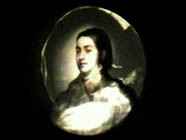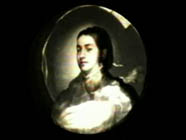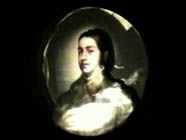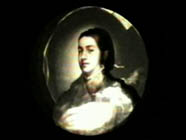|
"There's no such thing as autobiography, there's only art and lies."
Jeanette Winterson: 'Art & Lies' 1995
Going from one of the most extravagant and exceptional self-portraits in the history of art, Parmigianino's 'Self-Portrait in a Convex Mirror' completed in 1524 (Kunsthistorisches Museum, Vienna), in her piece 'Selbstportrait konkav' (Self-Portrait Concave) Katarina Matiasek creates a specific discourse on image, effigy, reflections and forms of perception. Parmigianino, who was famous for his portraits in particular, painted his Self-Portrait when he was twenty-one to recommend himself to Pope Clement VII. It became more than just a mere likeness of the young painter, it was a sample of Parmigianino's talent, his self-confidence and, above all, his inventiveness. The characteristic distortions are the result of having used a convex (outwardly domed) mirror, the painter's 'image' in which was transferred to a similarly domed piece of wood. The right hand practically encircles the entire lower edge of the painting; it holds a quill, an essential artist's instrument but also a symbol for the act of painting. The pleasure gleaned from the artificial and fantastic game, as articulated in Parmigianino's image by the anamorphosis (quasi-foreshortening), also accompanies Matiasek's 'Selbstportrait konkav'.
Using a simple slide projection of the painting by Parmigianino onto the face of a male acquaintance of the artist's creates a kind of 'animated' portrait which was shot with a video camera to form the basis for the loop. A sequence of three seconds was selected to create the impression of a moving gaze. Here the sense of movement is a vague one, really only a wink from this doubled figure. A mirror image (right-left reversed) results from the final projection of the image in relation to Parmigianino's original. The term 'concave' in the title of the piece alludes to the installation situation: a narrow black space for the visitors to enter, quasi-like the concave hollow of the extended space of the image. The interblending of two male faces conceals the 'true' (in the sense of Winterson's opening quotation) identity of the artist behind a mask of artificiality, fictive gender construction and applied technology. In playing with a person's own identity, the issue is after all also the staging of a tromp l'oeil effect where, among other factors, the possibilities of the equipment used count: the instrument in the (now left) hand could well turn out to be a computer mouse. (patgrz)
(Translation Jonathan Quinn) |










